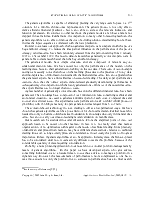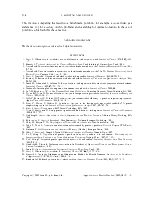













APPLIED STOCHASTIC MODELS IN BUSINESS AND INDUSTRY
Appl. Stochastic Models Bus. Ind., 2002; 18:121–134 (DOI: 10.1002/asmb.457)
Stock timing using genetic algorithms
J. Korczak1,y and P. Roger2,*,z
1
University Louis Pasteur, LSIIT, Pole API, Boulevard S.Brant, 67400 Illkirch CEDEX,# France
2
University Louis Pasteur, LARGE, Pole Europ# een de Gestion et d’Economie, 61 Avenue de la for! et noire, 67085#
Strasbourg CEDEX, France
SUMMARY
In this paper, a genetic algorithm to search a set of technical trading rules which gives buying and selling advices about individual stocks is proposed. This approach is tested out of a sample of 24 French stocks among the most important stocks traded on the French market. We show that in most cases, the method outperforms a simple buy and hold strategy. However, we also illustrate the fact that the near-optimal set of rules varies through time and across stocks. Copyright # 2002 John Wiley & Sons, Ltd. KEY WORDS: genetic algorithms; stock timing; technical analysis; market efficiency
The efficient markets hypothesis (EMH) is one of the most important foundations of modern finance theory. Since Fama’s seminal paper [1] defining the three forms of market efficiency, numerous papers have been devoted to testing this hypothesis. The weak form of the EMH states that one cannot beat the market by trading on past price information; in other words, all the relevant informations are contained in current prices or, more technically speaking, the stochastic process of prices is Markovian.
Most of the early empirical tests conclude that financial markets in developed countries are efficient in the weak form. Even if some portfolios generate abnormal profits in the absence of transaction costs, such costs taken into account would mean that these benefits would vanish or become negative. Nevertheless, entire books are devoted to technical analysis, the rules of which are supposed to be able to identify trends or reversals in trajectories of prices.} For a long time, there has been an intense debate between practitioners and academics about technical trading rules, the former saying that some trading strategies, applied with discernment, can generate substantial profits, while the latter swear only by the EMH. Early attempts to use technical trading rules were based on simple filters [3–5]; it was a good illustration of the role of
![]()
*Correspondence to: P. Roger, University Louis Pasteur, LARGE, Pole Europ# een de Gestion et d’Economie, 61 Avenue!
de la foret noire, 67085 Strasbourg CEDEX, France# y
E-mail: jjk@dpt-info.u-strasbg.fr z
E-mail: roger@cournot.u-strasbg.fr
}
See Reference [2] for a general presentation of technical rules.
Received 2 February 2001 Copyright # 2002 John Wiley & Sons, Ltd. Revised 15 January 2002
transaction costs.[1] More recently, moving averages were used on a century of daily Dow–Jones index data by Brock et al. [7]. They showed that profitable results could be obtained, but they did not consider transaction costs.
A growing body of empirical literature is related to portfolio management when returns are predictable [8,9], however these studies essentially consider long-term predictability, meaning, in some important cases, that price processes are mean reverting. In the short run, it is not clear today if the returns are predictable and if the benefits can be obtained by technical methods; the question remains pertinent especially because transaction costs have significantly decreased in recent years, even for small investors, for example those using on-line trading. Moreover, practitioners often use technical trading rules together with more traditional tools such as fundamental analysis as shown in Reference [10].
When reading the literature available on technical analysis, one might feel uneasy for several reasons. First, more than 200 generic rules leading to buying and selling signals can be identified. Moreover, each of these rules can be instantiated in many different ways as it needs parameters for its implementation; for instance, moving averages may cover various time frames (5 days, 1 month, 200 days, etc.). The second problem lies in the interpretation of these rules; it seems to require some ‘experience’ or appears to be quite subjective to financial economists. Last but not least, there is such a large number of rules that no human being can integrate them all in a decision process.
To summarize, technical analysis assumes that future trends can be identified, as a more or less sophisticated function of past prices, all the proposed trading rules being a practical means of identifying trends and reversals of this function. It is worth noting that a lot of money and energy is devoted to these methods, each user having his own preferences chosen from techniques such as moving averages, momentums, Japanese candlesticks, Fibonacci’s series and so on. One of the difficulties in testing these methods is the data mining problem or the rule discovery process from time series. If an efficient set of rules is discovered, based on the analysis of a learning period, then it has to be tested out of samples to measure its robustness and real efficiency.
Уважаемый посетитель!
Чтобы распечатать файл, скачайте его (в формате Word).
Ссылка на скачивание - внизу страницы.